Table of Contents
Introduction
As part of its remit for setting international standards, the ILO develops standards covering different areas of labour statistics. These standards include definitions of relevant concepts, operational definitions and guidance on implementation. The internationally agreed recommendations and guidelines on their measurement are contained in the Resolutions and Guidelines adopted by the International Conference of Labour Statisticians (ICLS).
For labour force statistics, major changes occurred between the standards adopted at the 13th ICLS in 1982 and those adopted three decades later at the 19th ICLS in 2013. Most notably, Resolution I of the 19th ICLS expanded the scope of labour statistics by recognizing the need to collect data on different forms of work, both paid and unpaid. To this end, employment was defined more narrowly as work done for pay or profit, while activities not done in exchange for remuneration (i.e., own-use production work, volunteer work and unpaid trainee work) were recognized as other forms of work.
This page describes the conceptual frameworks on forms of work and labour force statistics as they stand after the 19th ICLS. It also provides updates on the implementation of the latest standards and links to ILOSTAT resources for data producers interested in implementing the standards.
Forms of work framework
According to the latest statistical standards, as described in the Resolution concerning statistics of work, employment and labour underutilization, work comprises any activity performed by persons of any sex and age to produce goods or to provide services for use by others or for own use. It includes five mutually exclusive forms of work:
Persons in employment or the employed population comprise all those of working age who, in a short reference period, were engaged in any activity to produce goods or provide services for pay or profit.
The notion of pay or profit refers to work carried out in exchange for remuneration payable in cash or in kind. It includes remuneration in the form of wages or salaries for time worked or for work done or in the form of profits derived from the goods and services produced for sale or barter. In accordance with the international guidelines on employment-related income , this includes remuneration, whether actually received or not, payable directly to the person performing the work or indirectly to a household or family member.
The employed population is measured in relation to a short reference period of one week or seven days, so as to produce a snap-shot picture of employment at a given point in time. When statistics on the employed population are collected at frequent intervals, these can serve to monitor changes over time in the levels, structure and characteristics of employment in countries.
The employed population comprises two main groups:
- persons employed, at work —i.e. who worked for at least one hour for pay or profit in the short reference period.
- persons employed, not at work —i.e. who had a job but did not work in the short reference period due to temporary absence from the job, for example due to sick leave, annual leave, maternity leave, etcetera, or due the nature of their working time arrangement, such as shift work, compensatory leave for over time, flexitime.
For operational reasons, to identify persons employed, at work in the short reference period, a criterion of “one hour” of work for pay or profit is used. This “one-hour criterion” ensures that all types of jobs, including part-time, temporary or casual, are taken into account in employment statistics so as to support the monitoring of working conditions of all employed persons. It is also essential in order to fully measure the contribution of employment to production, and thus to national accounts. Likewise, it enables employment and unemployment statistics to refer to mutually exclusive groups of the population, which when added together comprise the labour force.
Current international guidelines
The latest international recommendations on the measurement of employment are contained in the Resolution concerning statistics of work, employment and labour underutilization adopted by the 19th ICLS in 2013 . This resolution recognizes employment as the form of work that serves as basis to produce labour market statistics. It provides reference concepts, operational definitions and guidelines to support countries in establishing their national programmes on work and labour market statistics.
This new resolution has introduced important changes to the statistical definition and measurement of employment. Compared to the previous international statistical standards, the following productive activities are no longer to be counted as employment. Instead, participation in these activities will be measured separately, through the forms of work: own-use production work , volunteer work , and unpaid trainee work :
- Production of goods when intended mainly or exclusively for own final use by the household or family (e.g. production and processing of goods from agriculture, fishing, and hunting and gathering; fetching water, collecting firewood, manufacture of other goods (textiles, ceramics, furniture, etc.), construction or major repair of own dwelling)
- Volunteer work for organizations
- Volunteer work producing goods for other households
- Unpaid work as trainee, intern or apprentice
These changes will also impact the measurement of unemployment and other measures of labour underutilization , as persons engaged in the above activities, who do not have a job for pay or profit will become eligible for assessment of their labour market attachment.
Own-use production work refers to activities performed to produce goods or provide services intended for final use by the producer, their household and/or family. This form of work is one of the oldest forms of organization of labour, whereby households produce mainly their own food, shelter and other necessities, and provide care and other services for household members, their premises and durables. Nowadays, the spread of markets for goods and services has resulted in dramatic changes in the way labour is organized. Participation in this form of work nonetheless remains widespread in countries at all levels of development and continues to be central to survival in impoverished and remote areas, particularly through subsistence agriculture and fishing, and through self-provisioning of water, firewood and other fuels in areas with limited infrastructure. It is also central to the wellbeing of households and families through the unpaid provision of services such as cooking, cleaning, care and instruction of family members, and maintenance and repair of their dwelling and other premises. Likewise, it is a common strategy for supplementing household income, through subsidiary plots and kitchen gardens in many urban and rural areas. Following concerns for more sustainable models of development, greater reliance on own-use production work to meet a variety of household needs is also becoming a lifestyle choice for parts of the population across countries around the world.
Information about participation and time-spent in own-use production work is essential to inform a wide range of policies including those targeting employment creation in rural areas, poverty reduction, food security, and provision of a wide range of services, including water supply, child and elderly care, domestic services, etcetera. It is also essential for addressing gender issues in the world of work and for better understanding participation and access to labour markets, and related issues such as work-life balance.
To adequately monitor trends and inform a wide variety of social and economic policies, the international statistical standards recommend producing separate statistics on:
- Persons in own-use production of goods
- Persons in own-use provision of services
Persons in own-use production of goods are defined as all those of working age who, during a specified reference period, performed any activity to produce goods for own final use. The notion “for own final use” refers to production where the intended destination of the output is mainly for final use by the producer in the form of capital formation, or for final consumption by household members, or by family members living in other households.
According to the international standards, own-use production of goods includes the following activities (within 2008 SNA production boundary) when intended mainly for own final use:
- Producing and/or processing for storage agricultural, fishing, hunting and gathering products;
- Collecting and/or processing for storage mining and forestry products, including firewood and other fuels;
- Fetching water from natural and other sources;
- Manufacturing household goods (such as furniture, textiles, clothing, footwear, pottery or other durables, including boats and canoes);
- Building, or effecting major repairs to, one’s own dwelling, farm buildings, etc.;
For policy purposes, an important sub-group of persons in own-use production of goods are subsistence foodstuff producers; that is, persons who performed any of the above activities to produce foodstuff from agriculture, fishing, hunting or gathering that contribute to the livelihood of the household or family.
Persons in own-use provision of services are defined as all those of working age who, during a specified reference period, performed any activity to provide services for own final use by household members, or by family members living in other households.
According to the international standards, own-use provision of services includes the following activities (inside the General production boundary but beyond the 2008 SNA production boundary) when performed unpaid for the household or family member:
- household accounting and management, purchasing and/or transporting goods;
- preparing and/or serving meals, household waste disposal and recycling;
- cleaning, decorating and maintaining one’s own dwelling or premises, durables and other goods, and gardening;
- childcare and instruction, transporting and caring for elderly, dependent or other household members and domestic animals or pets, etc.;
Current international guidelines
The latest international recommendations on the measurement of own-use production work are contained in the Resolution concerning statistics of work, employment and labour underutilization adopted by the 19th ICLS in 2013. This resolution provides reference concepts, operational definitions and guidelines to support countries in establishing a comprehensive system of on work and labour market statistics that includes, as an integral part, statistics on own-use production work. More so, in countries where subsistence agriculture and/or fishing is a common activity in particular regions or among certain groups of the population, the international guidelines recommend that statistics on persons in own-use production of goods be produced with the same frequency as statistics on employment and labour underutilization.
Time use surveys are a key source of detailed statistics on persons’ use of time in different activities, including in own-use production work, and especially, in own-use provision or services. For monitoring trends and to enable analysis of dynamics between participation in the labour market and in own-use production work, inclusion of short modules on participation in own use production of goods and in own-use provision of services in national labour force surveys are also recommended.
Volunteer work refers to activities performed willingly and without pay to produce goods or provide services for others outside the volunteer’s household or family. Volunteer work plays an important role in countries, contributing to production and to economic output, particularly in the non-profit sector, and also to community development, social cohesion and civic participation.
Persons in volunteer work are defined as all those of working age who during a short reference period, performed any unpaid, non-compulsory activity to produce goods or provide services for others; that is for economic units outside the volunteer’s household or family.
For analytical and policy purposes two kinds of volunteer work can be separately identified:
- Organization-based volunteering –that is, volunteer work performed for, or through organizations
- Direct volunteering –that is, volunteer work performed directly for other households, excluding the household of the volunteer or of family members living in other households
While a main aspect of volunteer work is that it is performed without an expectation of payment, volunteers may nonetheless receive some small form support or stipend for out of pocket expenses, or to cover living expenses while engaged in the voluntary activity. They may also receive meals and transport or symbolic gifts in recognition for their contribution.
Another important aspect of volunteer work is that it is done on a voluntary basis, that is, without any civil, legal or administrative requirement. This is an important element that distinguishes volunteer work from other work activities that are unpaid and performed for others, but that are done on a compulsory basis, such as court-mandated community service, mandatory national service related to a military draft or service required as part of an education programme or to acquire certification in a given profession.
Current international guidelines
The latest international recommendations on the measurement of employment are contained in the Resolution concerning statistics of work, employment and labour underutilization adopted by the 19th ICLS in 2013 . This resolution provides reference concepts, operational definitions and guidelines to support countries in establishing a comprehensive system of statistics on work, including volunteer work.
More detailed guidance for the collection of statistics on volunteer work, in particular through household surveys, is provided in the ILO Manual on the measurement of volunteer work (2011).
Newly recognized in the international statistical recommendations is the measurement of unpaid trainee work. This form of work refers to work performed for others without pay to acquire workplace experience or skills. Unpaid trainee work can be an important activity for youth providing them with initial labour market experience. In other instances, it may also represent a traditional arrangement for gaining specific occupational skills in a given trade or profession. Likewise, in some cultures, unpaid trainee work is an important mechanism of providing services to communities, and may be required in order to complete training in a profession or to earn a certification. In all instances, this form of work, contributes to production and thus to economic output.
Information about unpaid trainee work is useful particularly to inform policies on human resource development, including vocational education and skills training. It is also essential to monitor working conditions for youth and to inform the development of policies aimed at improving employability of youth.
Persons in unpaid trainee work are defined as all those of working age who during a short reference period, performed any unpaid activity to produce goods or provide services for others, in order to acquire workplace experience or skills in a trade or profession.
Unpaid trainee work may take place in the context of traditional, formal or informal arrangements, whereby the trainee provides its labour to an economic unit in exchange for workplace learning. However, learning a specific occupation in a classroom context does not constitute unpaid trainee work. Rather, the trainee must contribute to the production process of an economic unit in order to be considered as work. Likewise, the trainee must be engaged in an economic unit, formal or informal, that is not owned by a household or family member. This is because, according to the international standards, family members who work in a business owned by household or family member are considered to be employed (as contributing family workers).
In contrast to paid apprenticeships, traineeships and other such programmes, which constitute a type of employment contract, unpaid trainee work is carried out without remuneration in cash or in kind for work done or hours worked. Nevertheless, unpaid trainees may receive some form of support, such as transfers of education stipends or grants, or occasional in cash or in kind support (e.g. a meal, drinks). Unpaid trainees may or may not receive a specific qualification or certification.
Current international guidelines
The latest international recommendations on the measurement of employment are contained in the Resolution concerning statistics of work, employment and labour underutilization adopted by the 19th ICLS in 2013 . This resolution provides reference concepts, operational definitions and guidelines to support countries in establishing a comprehensive system of work and labour market statistics, including statistics on unpaid trainee work.

FAQ
For data producers
As part of its remit for setting international standards, the ILO develops standards covering different areas of labour statistics. These statistical standards are introduced through the adoption of resolutions and guidelines at the International Conference of Labour Statisticians (ICLS). They include definitions of relevant concepts, operational definitions, and guidance on implementation. Their purpose is to guide countries wishing to develop or revise their national labour statistics programmes, as well as to enhance international comparability.
For labour force statistics, major changes occurred between the standards adopted at the 13th ICLS in 1982 and those adopted three decades later at the 19th ICLS in 2013. Simply put, the 19th ICLS:
- introduces new forms of work, including on unpaid work,
- narrows the definition of employment, and
- expands the set of measures for labour underutilization.
The objective of the 19th ICLS standards is to improve the evidence base for policy-making on work and the labour market. One of the key motivators behind many of the changes was to improve the gender relevance of statistics on work. The new standards were developed to address potential gender biases in statistics due to differences in paid and unpaid work activities between women and men.
Comparing results based on the two sets of standards shows that there can be substantial differences for headline indicators. The main difference introduced by the 19th ICLS standards is that the own-use production of goods is no longer considered employment. Thus, employment levels and employment-to-population ratios will be lower in countries where these activities are common. This is particularly the case in low- and low-middle-income countries. Meanwhile, rates of labour underutilization, including unemployment rates, will be higher. For details, refer to the quick guide on ILOSTAT and the 19th ICLS.
The revisions to definitions introduced by the 19th ICLS created major breaks in some countries’ time series, thus hindering trend analysis. Moreover, when indicator definitions differ across countries (due to differing implementation schedules of new standards, for example), data users should not make international comparisons.
However, to address the challenges posed by evolving statistical standards, the databases on ILOSTAT are now separated based on concepts and definitions, among other factors. A separate database called “Work Statistics – 19th ICLS” (WORK) provides time series for countries that have applied the revised statistical standards. Each database contains only series comparable within and across countries, allowing data users to continue making meaningful time series analysis and international comparisons. Users of ILOSTAT data are advised not to use data across databases based on different concepts and definitions.
There are 77 countries with data available based on the 19th ICLS standards, which are published in the Work Statistics – 19th ICLS (WORK) database.
As more countries implement the 19th ICLS standards in their LFS questionnaires, ILOSTAT contents will be adjusted accordingly. In the short-term, additional indicators and classifications will be added to the WORK database. As more data becomes available based on the revised standards, additional databases based on these will become available. In the meantime, ILOSTAT users are encouraged to assess their data needs closely to determine which database best suits their purpose.
For data users
In 2013, the 19th International Conference of Labour Statisticians (ICLS) adopted statistical standards which will act as the reference point for official statistics on work and the labour force for decades to come. Among the key highlights are:
- The first statistical definition of work – covering all activities done by people to produce goods and services for consumption by themselves or others.
- A forms of work framework recognising different types of paid and unpaid work.
- A new definition of employment as work for pay or profit – narrower than the previous definition adopted in 1982.
- A range of new indicators to better describe peoples’ work and engagement with the labour market, including new labour underutilization indicators to supplement the unemployment rate.
The 2013 standards are being used as a basis to update related standards, for example, through the adoption of a new classification of status in employment (ICSE-18) at the 20th ICLS in 2018, and the expected adoption of new standards on informality at the 21st ICLS in 2023. In combination these standards will provide the basis for a more comprehensive range of statistics on work and the labour market.
The standards adopted in 1982 (13th ICLS) have played an important role in enabling the expansion of availability of labour market statistics, in particular statistics on employment and unemployment. However, over time a number of limitations within the framework adopted in 1982 emerged, such as a lack of separate recognition of various types of unpaid work, inconsistent application of concepts across countries hampering comparisons, and an insufficient range of indicators to describe the labour market and its evolution. The new standards seeks to address all these limitations, while retaining and supplementing core indicators on employment and unemployment.
Among other objectives, an important goal is to address significant gender data gaps (see for example this report by Data2x), such as a deficit of information on unpaid work, predominantly performed by women.
The short answer is that for many countries the surveys used to measure labour will need to be updated to reflect the latest standards. In countries where subsistence farming is prevalent, surveys will need to include questions to identify if people are producing goods for sale or for own-use, particularly for those engaged in farming or fishing. Various other updates will be needed, for example to allow full reporting of new labour underutilization indicators or to apply the ICSE-18 classification. Published model questionnaires and guidance already address these needs and will continue to be added to over time.
In addition to the task of updating surveys, there will be other challenges to be addressed, such as:
- Communications with users need to be managed carefully both to build support for a change in approach and also to prepare users for the forthcoming changes.
- Deciding on the frequency of measurement of different topics in order to manage respondent burden. For example, it could be decided to cover own-use production of foodstuff on a regular basis but volunteer work or unpaid care and domestic work relatively less frequently depending on national priorities and resources.
- Deciding on a testing and implementation strategy to introduce changes. Different approaches can be taken which yield different amounts of information. For example, parallel surveys – which involve running the old and new survey in parallel – can generate substantial amounts of information on the impact of the changes on indicators. However, they are resource intensive and costly. Smaller scale tests can be useful to ensure new survey questionnaires are fully validated in advance of full-scale use but will generate less information to assess the impact on indicators.
While the labour force survey will be the most common source of labour statistics for most countries, other sources can also be used to measure labour, for example other household surveys (e.g. Household income and expenditure surveys, time-use surveys), surveys of agricultural holdings, the Population Census, administrative data, establishment surveys etc. To the extent these sources generate statistics on employment, labour underutilization or work plans will need to be developed to apply the 19th ICLS standards to those sources also.
At the 19th ICLS, countries asked the ILO to provide guidance and support implementation of the new standards, in particular through labour force surveys and other household surveys. The ILO has sought to meet this demand through three broad related sets of activities:
- The provision of technical assistance to countries through our global technical team, led by our regional statisticians with the support of colleagues from ILO headquarters.
- The development and delivery of capacity building programmes at national, regional and global levels. The main global level programme is the Labour Market Statistics and Analysis Academy, hosted by the International Training Centre of the ILO in Turin each year.
- The development of guidance and tools to support implementation. A wide range of materials have been developed and are being added to over time, including:
- Model LFS questionnaires and supporting guidance covering core questionnaire content and additional content such as the measurement of skills mismatch, volunteer work and others.
- Guidance for implementation of the latest standards through the Population Census
- A range of online tutorials
- In relation to volunteer work a self-learning course and measurement guide
A key focus of the ILO strategy is to support the development and implementation of labour force surveys reflecting the latest standards and good measurement practices. With this in mind the ILO has been extensively engaged in pilot studies in collaboration with different countries since 2015. Different rounds of studies have been completed or are ongoing on a range of topics, including the measurement of employment, labour underutilization, volunteer work, own-use production of goods, unpaid care and domestic work and informality. The accumulated experiences are reflected in the model LFS questionnaires and inform training and technical assistance activities. The ILO will continue to update the published guidance, questionnaires and tools based on further studies and country experiences over time. One important objective of this strategy is to develop and maintain a coherent set of measurement guidance that allows countries to measure different topics at different frequencies through their labour force surveys – covering topics in a way most closely matching national priorities while still making best use of good measurement practices.
A total number of 77 countries are already producing labour force statistics using the refined definition of employment. Most of these countries (mainly from Europe and Americas) had been applying this definition even before 2013. The rest of countries improved their labour force surveys after the 19th ICLS to make this possible, some with support from the ILO. Almost all of these countries started producing statistics on other forms of work like own-use production and volunteer work.
Other countries are working on the implementation of the new standards in close collaboration with the ILO, taking advantage of the practical guidance and survey tools developed by the Statistics Department.
Any change in statistical standards brings challenges, in particular breaks in time series that may have been in place for a long time and widely used or of high prominence at national or international level. In the case of the 19th ICLS standards, estimates of employment (and other indicators) will not be directly comparable to those generated based on the 13th ICLS definitions. However, opportunities exist to study and understand changes through the process of introducing the new standards. For example, the correct testing and implementation strategy can potentially enable linking between old and new series, or at least enable an in-depth analysis of impacts of changes.
To give one example, a well-designed questionnaire with the right coverage can allow an estimate to be made of people who were performing activities covered by the 13th ICLS definition of employment, as well as the 19th ICLS definition. For those concerned with continuity of productivity measurement, this offers the potential to mitigate concerns about breaks in series. However, these concerns remain valid and careful planning along with adequate resources and support will be needed to address them to the extent possible.
It is the strong view of the ILO that the benefits of implementing the latest standards will significantly outweigh the risks involved, as long as the right approach to implementation is chosen.
A separate ILOSTAT database called “Work Statistics – 19th ICLS” (WORK) provides time series for countries that have applied the latest standards. It includes the usual labour force statistics (for example, labour force and unemployment rates), as well as indicators on unpaid work (for example, volunteer rates and subsistence foodstuff production rates).
As noted in the previous question and answer, there is a separate database that provides time series for countries that have applied the 19th ICLS standards. The rest of the databases are based on the 13th ICLS concepts and definitions. If a country has applied the latest standards then data based on the 13th ICLS standards may still be available. These figures will differ from what is nationally reported. For information on the methodology used to produce data based on the 13th ICLS standards, refer to the quick guide.
Labour force statistics
As defined in international standards (19th ICLS, 2013), the labour force captures those persons of working age who are actively engaged in the labour market. It is the sum of persons employed and the unemployed. Together these two groups of the working-age population represent the supply of labour for the production of goods and services in exchange for remuneration existing in a country at a given point in time.
Key indicators to monitor the working-age population and labour force include the employment-to population-ratio, labour force participation rate, as well as age dependency ratios. These are essential headline indicators of the labour market that need to be complemented with additional indicators, such as measures of labour underutilization for monitoring and to inform policy. The concepts and definitions for these indicators are described for the databases Labour Force Statistics (LFS) and Work Statistics – 19th ICLS (WORK).
Labour underutilization
A main objective of monitoring labour markets is to assess the extent to which the economy is fully utilizing its available human resources, or put another way, the extent to which it provides opportunities to employ its population to its full potential. Three main measures of labour underutilization recognized in the international statistical standards are:
Time-related underemployment captures persons who are employed but whose working time is insufficient compared to an alternative employment situation in which they are willing and available to engage. Persons in time-related underemployment are defined as all persons in employment, who during a short reference period, wanted to work additional hours, whose working time in all jobs was less than a specified hours’ threshold, and who were available to work additional hours given an opportunity for more work.
Unemployment captures persons that altogether lack employment, but who are actively putting pressure on the labour market by seeking opportunities for employment and by being currently available to start working. Thus, they represent current underutilized labour supply. Persons in unemployment or Unemployed population are defined as all those of working age who were not in employment, carried out activities to seek employment in a recent period (comprising the previous 4 weeks or month) and were currently available to take up employment (in the reference period or within a short subsequent period not exceeding two weeks in total).
Potential labour force captures persons who, similar to unemployed, lack employment and exert some pressure on the labour market. However, compared to the unemployed they show a lower level of attachment, as they either do not seek employment or are not available to start working. As the term indicates, they thus represent the potential supply of labour at a given point in time. Potential labour force is defined as all persons of working age who were neither in employment, nor in unemployment but who were: (a) unavailable job seekers, that is, carried out activities to seek employment in a recent period but were not currently available to take up employment, or (b) available potential job seekers, that is, did not carry out activities to seek employment in a recent period, but wanted employment and were currently available to take up employment.
These measures capture groups of the population that, in one way or another, do not have sufficient access to employment (i.e. work for pay or profit). These groups share in common an unmet need for employment but differ in terms of their participation or attachment to the labour market. In the international standards, they have been defined so as to be coherent with the measurement of employment and with the classification of the working age population by labour force status . They are thus, current measures of labour underutilization, assessed in reference to a short reference period, so as to provide a snapshot picture of labour market performance and support monitoring of changes over time through their frequent measurement.
Current international guidelines
The latest international recommendations on the measurement of labour underutilization are contained in the Resolution concerning statistics of work, employment and labour underutilization adopted by the 19th ICLS in 2013. These recommendations recognize the monitoring of labour markets and of labour underutilization as a core objective of national labour market statistics programmes. They provide detailed definitions and operational guidelines for the measurement of these three components of labour underutilization as well as guidance to calculate different indicators to be disseminated together with the unemployment rate as headline measures for monitoring labour market performance.
Other important dimensions of labour underutilization are also recognized, including skills mismatches and slack work, in particular among the self-employed. At present, the ILO Department of Statistics is conducting work in order to develop suitable measures of these important dimensions of labour underutilization for future discussion by the ICLS.
Guidance to measure related forms of inadequate employment, particularly with respect to skills, income and excessive working time, are also contained in the Resolution concerning the measurement of underemployment and inadequate employment situations, adopted by the 16th ICLS in 1998.
Implementation of the latest standards
The map provides an overview of the implementation of the 19th ICLS standards in 2023. For details on the implementation types, refer to the quick guide from which it is extracted.
For the most up-to-date information on countries that have adopted the latest standards, please check the data availability in the WORK database.
Publications
Note: Many publications are available only in English. If available in other languages, a new page will open displaying these options.
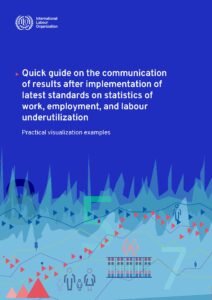
Quick guide on the communication of results after implementation of latest standards on statistics of work, employment, and labour underutilization
A crucial aspect of the implementation of latest labour statistics standards is the effective communication of the results, to ensure getting the best out of the data. This guide aims to provide practical data visualization examples to convey clearly and intuitively the impact of methodological changes on key labour indicators following the implementation of the 19th ICLS resolution and avoid misinterpretation of the results.
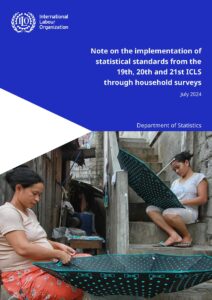
Note on the implementation of statistical standards from the 19th, 20th and 21st ICLS through household surveys
This note provides an overview of the requirements to apply the latest statistical standards through household surveys.
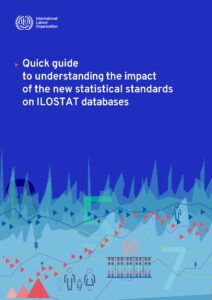
Quick guide to understanding the impact of the new statistical standards on ILOSTAT databases
This quick guide explains the differences between the 13th and 19th ICLS standards, the impact of the revisions on headline indicators, and how the ILO handles this on ILOSTAT.
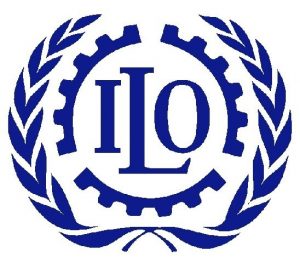
Resolution concerning statistics of work, employment and labour underutilization (including amendments)
Adopted by the 19th ICLS (2013), this resolution sets standards for work statistics to guide countries in updating and integrating their existing statistical programmes in this field. It defines the statistical concept of work for reference purposes and provides operational concepts, definitions and guidelines for: (a) distinct subsets of work activities, referred to as forms of work; (b) related classifications of the population according to their labour force status and main form of work; (c) measures of labour underutilization.
Research and tools for data producers
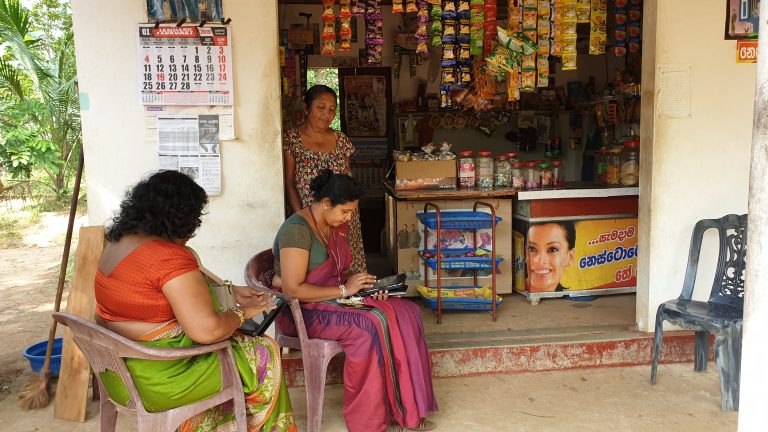
LFS research and development
Learn more about the ILO’s programme of methodological research to identify and promote good practices in the collection and reporting of labour statistics.
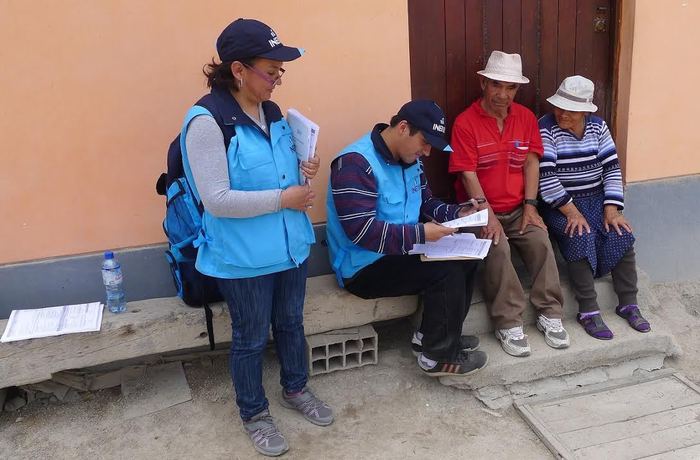
Labour force survey (LFS) questionnaire toolkit
Online resources for data producers to build or improve their labour force survey, such as PAPI and CAPI model questionnaires.

